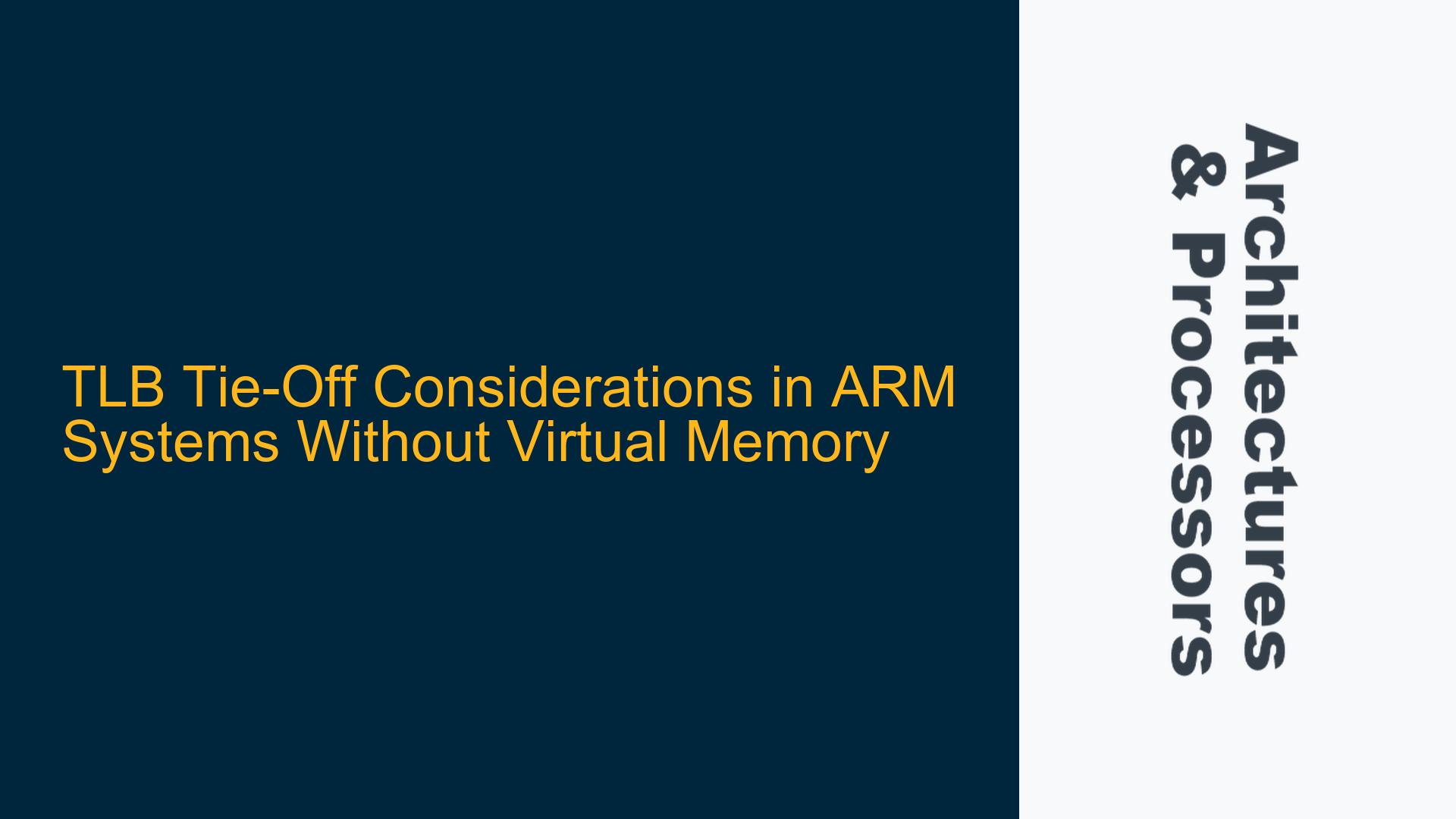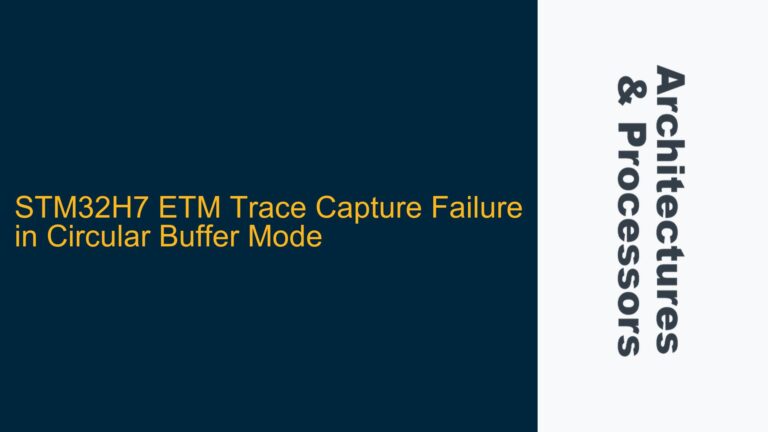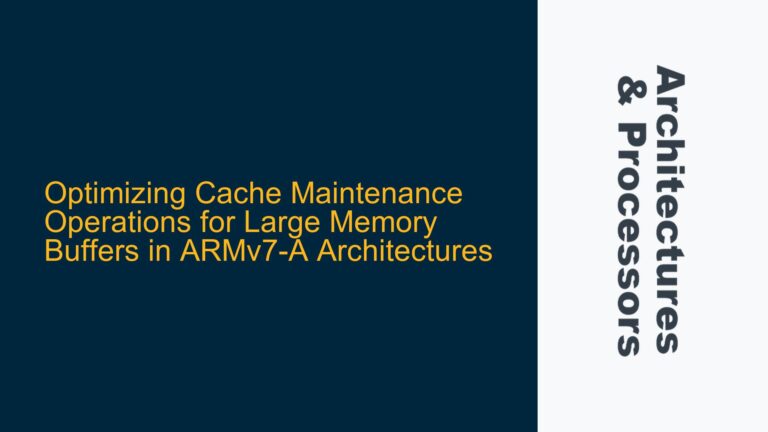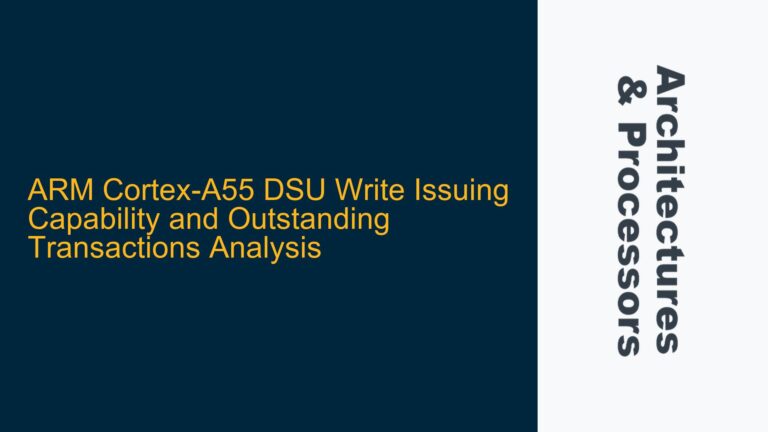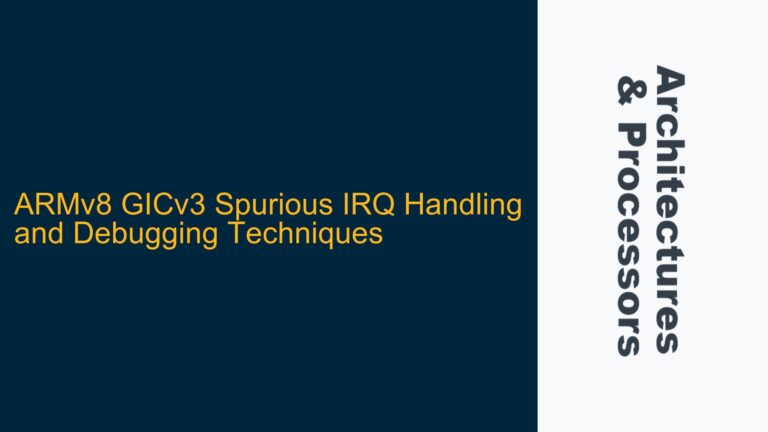ARM TLB Functionality and Its Role in Physical Address Space Management
The Translation Lookaside Buffer (TLB) is a critical component in ARM architectures, primarily designed to accelerate virtual-to-physical address translation. However, in systems where virtual memory is not utilized, the necessity of the TLB comes into question. When the entire memory map fits within the physical address space, and external DIMMs are not employed, the TLB might seem redundant. The TLB’s primary function is to cache page table entries, which are used to translate virtual addresses to physical addresses. In systems without virtual memory, all addresses are physical, and the TLB’s role in address translation is nullified.
However, the TLB is not solely responsible for address translation. It also plays a role in defining memory attributes, such as cacheability and memory type (e.g., device memory, normal memory). These attributes are crucial for ensuring correct behavior in systems with mixed memory types. For instance, device memory typically requires non-cacheable access to ensure that reads and writes occur directly to the device registers without any intermediate caching. Normal memory, on the other hand, can benefit from caching to improve performance. The Memory Management Unit (MMU), which includes the TLB, is responsible for enforcing these memory attributes.
In systems where virtual memory is not used, the MMU can still be configured to manage memory attributes. The TLB, as part of the MMU, can be used to cache these attributes, even if address translation is not required. This means that while the TLB’s primary function might be unnecessary, its secondary role in managing memory attributes remains relevant. Disabling or tying off the TLB could lead to incorrect memory attribute enforcement, resulting in unpredictable system behavior.
Implications of TLB Tie-Off on Memory Attribute Enforcement
When considering whether to tie off the TLB in a system without virtual memory, it is essential to understand the implications on memory attribute enforcement. The MMU, through the TLB, ensures that memory accesses adhere to the specified attributes. These attributes include cacheability, shareability, and memory type. If the TLB is tied off, the system may lose the ability to enforce these attributes correctly, leading to potential issues such as data corruption, performance degradation, or even system crashes.
For example, consider a system with both device memory and normal memory. Device memory, such as memory-mapped I/O registers, must be accessed non-cacheably to ensure that each read or write operation directly interacts with the hardware. If the TLB is tied off, the system might incorrectly cache accesses to device memory, leading to stale data being read or writes being delayed. This could cause the system to malfunction, as the hardware registers would not be updated or read correctly.
Similarly, normal memory, which is typically cacheable, relies on the TLB to enforce cacheability attributes. If the TLB is tied off, the system might treat normal memory as non-cacheable, leading to significant performance degradation. Without caching, every memory access would have to go directly to the main memory, increasing latency and reducing overall system performance.
Furthermore, the TLB plays a role in managing memory protection. Even in systems without virtual memory, memory protection mechanisms might still be necessary to prevent unauthorized access to certain memory regions. The TLB, as part of the MMU, can enforce these protection mechanisms. Tying off the TLB could disable these protections, leaving the system vulnerable to unauthorized access and potential security breaches.
Configuring the MMU and TLB for Systems Without Virtual Memory
In systems where virtual memory is not used, it is still possible to configure the MMU and TLB to manage memory attributes without performing address translation. This configuration ensures that the system benefits from the TLB’s role in enforcing memory attributes while avoiding the overhead of virtual-to-physical address translation.
To configure the MMU and TLB in such systems, the following steps can be taken:
First, the MMU should be configured to use a flat memory map, where the virtual addresses are identical to the physical addresses. This can be achieved by setting up the page tables to map virtual addresses directly to physical addresses without any translation. The page table entries should still include the necessary memory attributes, such as cacheability and memory type.
Second, the TLB should be enabled to cache these page table entries. Even though address translation is not required, the TLB can still cache the memory attributes, ensuring that they are enforced correctly. This allows the system to benefit from the TLB’s role in managing memory attributes without the overhead of address translation.
Third, the system should be configured to ensure that all memory accesses go through the MMU. This ensures that the memory attributes specified in the page tables are enforced for all memory accesses. In some systems, it might be possible to bypass the MMU for certain memory regions, but this should be avoided to ensure consistent behavior.
Finally, the system should be tested thoroughly to ensure that the memory attributes are being enforced correctly. This includes testing both normal memory and device memory to ensure that cacheability and memory type attributes are being applied as expected. Any issues should be addressed by reviewing the MMU and TLB configuration and making necessary adjustments.
In conclusion, while it might seem tempting to tie off the TLB in systems without virtual memory, doing so can lead to significant issues related to memory attribute enforcement. Instead, the MMU and TLB should be configured to manage memory attributes without performing address translation. This ensures that the system benefits from the TLB’s role in enforcing memory attributes while avoiding the overhead of virtual-to-physical address translation. By carefully configuring the MMU and TLB, it is possible to achieve a reliable and efficient system implementation that meets the requirements of the application.
